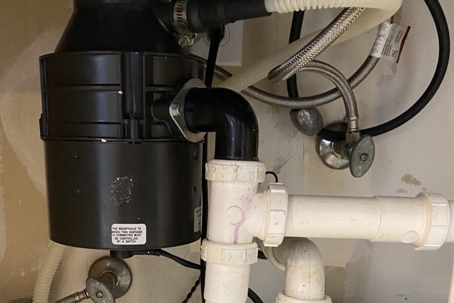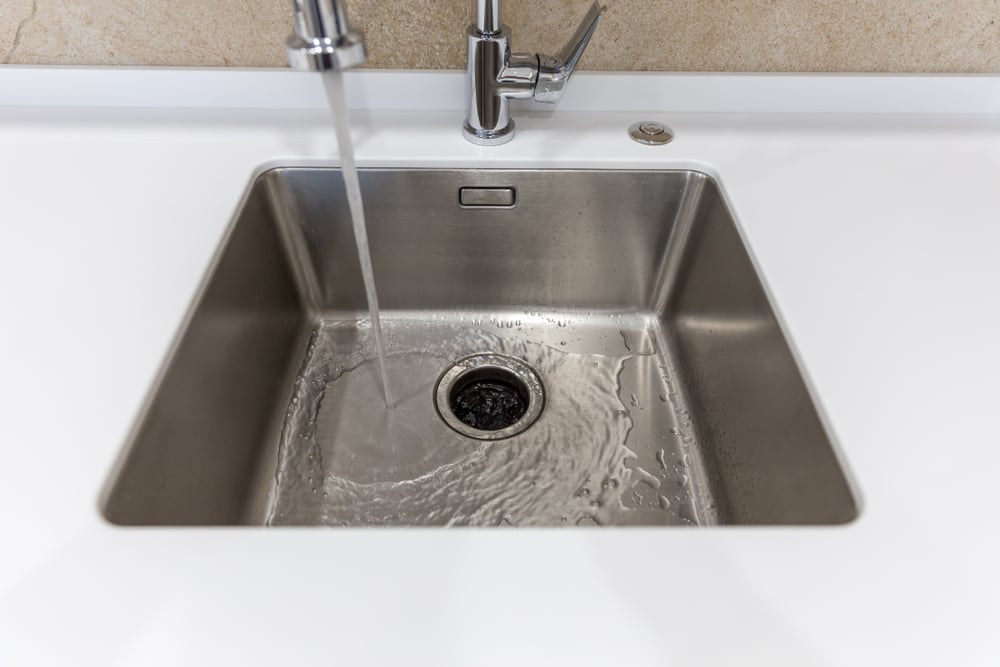Rapid Fixes for a Dripping Garbage Disposal
Rapid Fixes for a Dripping Garbage Disposal
Blog Article
They are making a number of good points regarding Tips on Fixing a Leaking Garbage Disposal in general in this content below.

Garbage disposals are important kitchen appliances that help in disposing of food waste successfully. Nonetheless, a dripping garbage disposal can be a frustrating and unpleasant issue to handle. Luckily, lots of leaks can be fixed easily with a few straightforward actions. In this short article, we will certainly discuss just how to fix a leaking waste disposal unit successfully.
Intro
Waste disposal unit are set up under kitchen sinks and are designed to shred food waste into smaller sized pieces, allowing it to go through the pipes system quickly. While these tools are generally trustworthy, leakages can occur in time because of deterioration, loosened links, or damages to the device.
Usual Causes of Leaks in Garbage Disposals
Worn Seals and Gaskets
Seals and gaskets play an important duty in avoiding water from leaking out of the garbage disposal. Over time, these parts can wear away, bring about leakages around the disposal unit.
Loose Links
The connections in between the waste disposal unit and the plumbing system can become loosened in time, causing water to leakage out during operation.
Cracks or Openings in the Disposal Unit
Physical damages to the garbage disposal, such as splits or holes in the real estate, can likewise lead to leakages.
Identifying the Resource of the Leak
Prior to attempting to fix a dripping garbage disposal, it is vital to determine the resource of the leak. This can usually be done through visual examination or by carrying out straightforward tests.
Visual Evaluation
Examine the garbage disposal device carefully for any type of indications of water leak. Pay close attention to locations around seals, gaskets, and link factors.
Examining for Leaks
One way to check for leakages is by running water with the disposal device and looking for any visible signs of leakage.
Tools and Materials Needed for Taking Care Of a Dripping Waste Disposal Unit
Before beginning the repair work process, gather the necessary devices and products, consisting of a screwdriver, adjustable wrench, plumbing technician's putty, substitute seals or gaskets, and epoxy or patching product for repairing splits or holes.
Step-by-Step Overview to Dealing With a Dripping Garbage Disposal
Switch off the Power
Prior to trying any kind of repairs, make certain that the power to the waste disposal unit system is turned off to stop the risk of electrical shock.
Locate the Leakage
Identify the precise area of the leak and establish the cause.
Tighten up Connections
Utilize a wrench to tighten up any loose links between the disposal device and the plumbing system.
Replace Seals or Gaskets
If the leakage is due to used seals or gaskets, eliminate the old components and change them with new ones.
Patching Fractures or Holes
For splits or openings in the disposal system, usage epoxy or a suitable patching material to seal the damaged area.
Evaluating the Waste Disposal Unit After Fixing
When the fixing is complete, evaluate the garbage disposal by running water with it to make sure that the leakage has been dealt with.
Preventive Upkeep Tips to Prevent Future Leaks
To stop future leaks, it is necessary to execute routine upkeep on your waste disposal unit. This consists of keeping it tidy, avoiding placing non-food items or hard items down the disposal, and occasionally checking for leaks or various other concerns.
Conclusion
To conclude, fixing a dripping garbage disposal is a relatively simple procedure that can be finished with standard tools and materials. By following the steps detailed in this article and practicing preventive maintenance, you can keep your garbage disposal in good working condition and avoid pricey repair work in the future.
What to Do About a Leaking Garbage Disposal
A leaking garbage disposal often goes unnoticed until you confront a sopping cabinet, a foul-smelling puddle, or an audible drip-drip-drip from the unit. The fix can be frustrating, too, because the leak can stem from a number of components in the system. Fortunately, with a little sleuthing, you can zero in on the leak and—depending on the exact location—stop the icky oozing and repair the component that caused it. Worst case scenario, if it turns out that the garbage disposal must be replaced, installing a new one is a reasonable do-it-yourself task for those with basic plumbing skills. Read on to keep the cash you’d otherwise hand over to a pro.
Prepare to find the leak
Prior to testing the garbage disposal for leaks, unplug it at the wall outlet and turn off the power from the breaker box to prevent electrical shock. Then insert a watertight sink stopper into your sink drain and wipe the unit dry with a clean cloth. In any handy container, mix a few drops of food coloring into a few cups of water, and pour the dyed water onto the sink stopper to help you locate the leak.
Investigate the source
the top, where the disposal meets the sink drain the side, where the dishwasher hose or main drain pipe connects to the disposal or the bottom of the unit Inspect each of these locations while gliding a light-colored rag over the unit; the dyed water will readily show on the rag and reveal the location of the leak. If a leak isn’t immediately apparent, remove the sink stopper and pour a few more cups of dyed water down the sink drain, then check for leaks again. Leaks near the top of the unit are more likely to show themselves while the sink is plugged, while side and bottom leaks are more noticeable while the sink is unplugged.
The metal sink flange that sits directly inside the sink drain is typically sealed around the top with plumber’s putty (a clay-like sealant) and then secured from under the sink with bolts. If the plumber’s putty deteriorates, or the bolts loosen, the flange can no longer form a watertight seal between the sink drain and the disposal—which could cause a leak at the top of the unit.
To reseal the leaky flange, you must first detach the garbage disposal. Start by loosening the screws securing the main drain pipe to the disposal, then loosen the screws in the metal clamp securing the dishwasher hose to the disposal and detach the drain pipe and dishwasher hose from the disposal. Loosen the screws in the mounting ring that connects the disposal to the metal mounting assembly beneath the sink, then pull down the disposal and carefully set it on a clean, dry surface. Loosen the bolts in the mounting assembly with a wrench, then pull down the mounting assembly and set it near the disposal.

I hope you enjoyed our excerpt on Garbage Disposal Leaking From Bottom. Thanks so much for taking the time to read through our blog post. So long as you enjoyed our blog entry kindly do not forget to share it. Thank-you for taking the time to read it.
Call Today Report this page